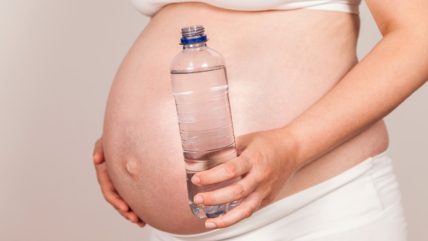
Newly published research into the presence of microplastics in human placentas has found them in all 62 samples tested, raising questions about the potential impact on fertility and health.
The full impact of microplastics on human (and animal) health is unclear, but Matthew Campen, lead researcher of the study at the University of New Mexico, says further research could establish whether they are responsible for increasing rates of inflammatory bowel diseases, autoimmune diseases and declining sperm counts.
Of the extent of the issue, he tells Packaging Gateway: “Plastics are everywhere. Microplastics are everywhere, and so are nanoplastics, which are even smaller than microplastics. This is just the world we live in.”
How microplastics enter the body
Plastic use globally has grown exponentially – from 2.1 million tonnes in 1950 to 147 million tonnes in 1993 and 406 million tonnes in 2015. A third of what has been produced is still in use, and small quantities are inevitably absorbed, either through ingestion or inhalation.
“Your lung deals with dust all the time …” explains Campen. “The lung has evolved to really get most of that out of your system and put it back into your stomach so you end up ingesting that anyway. However, 1,000 or 10,000 times more massive plastic particles come in through your gut.”
The most prevalent polymer in the placental tissue was polyethylene, which accounted for 54% of the plastics found, while polyvinyl chloride (PVC) and nylon accounted for around 10% each. Polyethylene is commonly used in plastic packaging including bags and bottles, while PVC is found in shrink wrap and clamshell packaging.
However, Campen points out that the microplastic derivatives of these products could be introduced into food sources much earlier, starting as early as the soil itself.
“There are concerns that the agricultural practices that involve irrigation of soil leads to an accumulation of plastics in the farmlands of major countries – the bread baskets around the world,” he says.
“We’re putting the plastics there and the crops grow; they have the plastics in them and we eat those crops, or we feed them to livestock where it is accumulated in their bodies, and then it comes to us. So, honestly, I’ve come to feel that humans are the bio-accumulating species on the planet for these plastics.”
How microplastics were found in placentas
Using a new method of analysis, Campen and his team were able to analyse the quantity and type of plastics present.
The study was conducted at the University of New Mexico, in partnership with colleagues at the Baylor College of Medicine and Oklahoma State University. Campen and his team analysed 62 donated placenta tissue samples using a process called saponification, which chemically treats samples to “digest” the fat and proteins into a soap-like substance.
The team then spun the substance in an ultracentrifuge, after which a small ‘nugget’ of plastic remained in the tube. Using a technique called pyrolysis, the plastic was heated to 600 degrees Celsius, and the gas emissions were used to provide a specific fingerprint depending on the polymer.
“We run [the emissions] through a mass spectrometer, and it gives us a more complete picture of 12 different types of polymers, as well as giving us a concentration in micrograms,” explains Campen. “It’s really more of an amount than a number of articles.”
The results were published in the Toxicological Sciences journal and showed that all of the tested placenta samples contained microplastics, with concentrations ranging from 6.5mcg to 790mcg per gram of tissue.
It represented a significant step forward in the analysis of microplastics, as researchers previously relied on manually counting the number of visible particles under a microscope, offering less accurate quantification.
Should we be worried about microplastics?
The study of microplastics in the human body is still in its infancy, but the presence of microplastics in placentas could raise serious questions around fertility, particularly if the presence of microplastics and nanoplastics continue the growth trajectory.
“All mammalian life could be affected because most mammals that I’m aware of use a placenta,” says Campen. “If we have something [plastic] on this planet that is everywhere, and it affects the ability of the placenta to do its job, then that’s going to reduce the fertility of all animals.”
Looking beyond the placenta, recent studies have also discovered microplastics in human blood, breast milk and veins. The findings have raised questions about potential correlations between the presence of microplastics and diseases, particularly those which have been inexplicably on the rise.
“There are a number of diseases that have been on the rise for decades. We can’t explain why age-adjusted rates of Alzheimer’s disease continue to go up …” says Campen. “Colorectal cancer has been going down in older individuals, but in in people younger than 50 years old, incidence has been climbing steadily since 1990; inflammatory bowel diseases; a number of autoimmune diseases including scleroderma, lung disease, interstitial lung diseases … and, among other things, declining sperm counts have been baffling us for 30 or 40 years …
“Plastics remain this big question and we’re now able to see it and quantify it. This really is something we need to look at very carefully.”
Despite the findings and the potential impacts, Campen also warns against the complete disparagement of plastic.
“We live in a world where people live very long, healthy lives into their 80s, 90s or hundreds,” he notes. “Obviously, we’re doing something right as a society of humans. Plastics are a part of that. The sterility, the food packaging, the medicine – a lot of that is owed to utilisation of plastics.”



